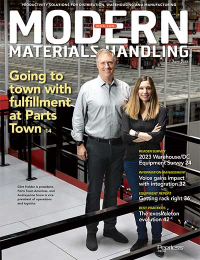Getting warehouse rack systems right
Rack systems can be a facility’s most important silent partner. But getting it right requires a plan and some expertise. Don’t be afraid to invest in both.
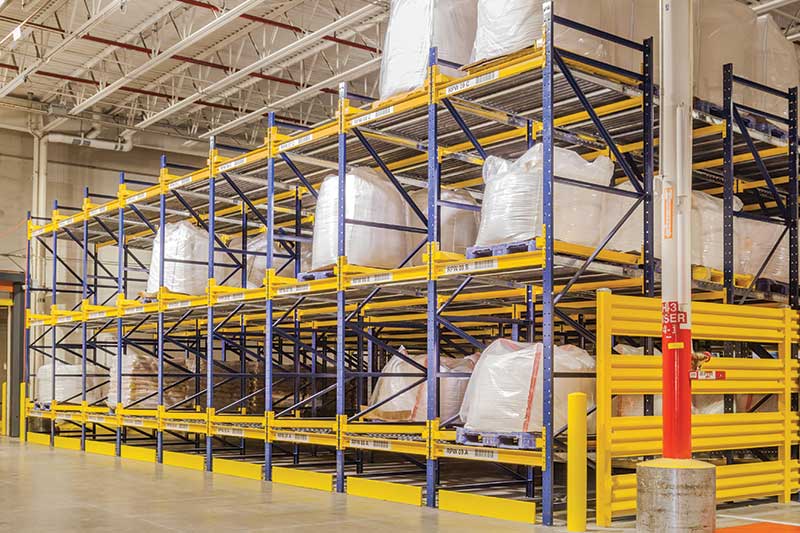
Complexity is increasing.
That was the understatement of the ProMat show last month. Interestingly enough, it appeared in what many would consider an unlikely place—a presentation about planning rack systems from the Rack Manufacturers Institute (RMI). How complex can rack planning be, anyway? More than some might think is a good bet.
It starts with the product being stored or staged in rack and extends all the way to how that rack interacts with people, lift trucks, automated systems and whatever else is going on in the facility.
The RMI presentation started with the move away from simple pallet in/pallet out rack activity. Here’s the graphic used to make the point.
But product in/product out is only one aspect of materials handling complexity that affects rack decisions. Just ask Adam Blodgget, CEO of third-party logistics (3PL) provider I-Drive.
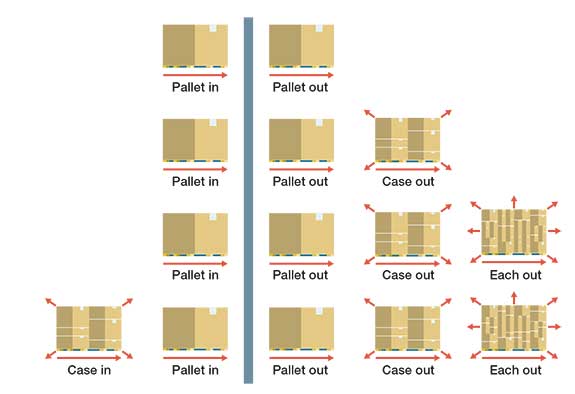
Since the company was founded in 2015, Blodgget has worked closely with Liftrucks ETC- Material Handling Solutions to plan the layout and mix of rack in multiple facilities as the 3PL’s business evolves.
Blodgget started with a 30,000-square-foot building that expanded to 52,000 square feet. That included 150 sections of tube rack from Hannibal Industries, now Nucor Warehouse Systems. In 2018, the company added a 148,000-square-foot warehouse with an initial racking area of 66,000 square feet. This year, the rest of the square footage is being filled with additional rack.
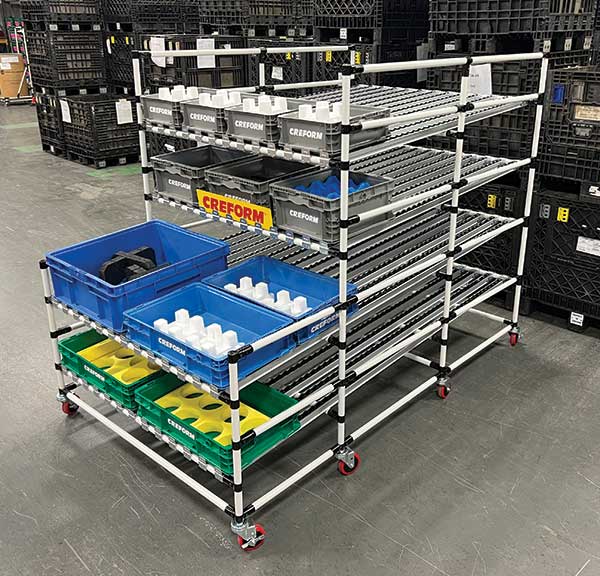
Along the way, I-Drive followed the same pattern in Salt Lake City. Twice.
“Each time, we had to find the best way to maximize our pallet/product storage as well as have the versatility to re-arrange racking to meet the needs of our different clients,” says Blodgget.
Finding that right design didn’t just happen, explains Dave Peck, president at Liftrucks ETC. “In each case, we worked through several designs and revisions, often using CAD design capabilities, to ensure the right type of rack, pallet beam elevations and the right layout were selected,” says Peck.
Clearly, pallet rack for I-Drive is anything but static. And the 3PL is not alone.

The right rack
In fact, nothing is static in rack, as both manufacturing and distribution continually adapt to rapidly shifting consumer demands.
“You need to select the racking that best fits the product stored,” explains Raymond Weber, regional sales manager at Steel King. For instance, bottled water and highly machined steel molds require different handling and storage.
When evaluating the appropriate rack needed, Weber starts with the product and quickly moves on to the unit loads themselves and then to the pallet/case/each profile.
“Rack systems must be designed to the job at hand,” says Dave Olson, national sales manager and marketing manager at Ridg-U-Rak. “Rack installations are engineered systems. Different products can be stored as long as they conform to the rack configuration in place,” Olson adds.
To make that right match requires an evaluation of the types of storage rack. The primary types are selective, cantilever, dynamic storage, pick module and specialty rack.
In addition, two primary rack construction options are available: roll-formed and structural steel. According to RMI, the former offers lower initial cost, more versatility and ease of reconfiguration. Structural steel, on the other hand, is heavy duty and often preferred for applications with stringent sanitation requirements.
A third type of rack, pipe and joint, is also an option, but for a limited set of applications ranging from line-side manufacturing to mobile storage units. These non-structural, modular custom rack systems from Creform can be configured for applications ranging from product flow to pick-to-light systems.
BG Edwards, Creform’s vice president of sales and marketing, says pipe and joint rack can be put on wheels for mobility in the facility or built to stay in one spot. In addition, work cells can be built incorporating a robotic arm and conveyor to cycle inventory through the pipe and joint rack.
Additional considerations
Inventory activity is yet another consideration in rack selection, says Olson. “One facility might have high volumes, and low SKU counts. Another might have low volumes and high SKU counts. Or a combination of the two in the same facility,” he says.
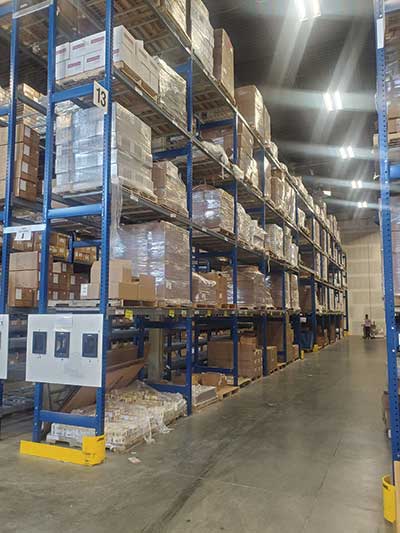
Weber also focuses on the fact that rack is not an island in any facility. Key considerations here include the interaction between the rack, lift trucks, automated materials handling equipment and systems as well as people. That also brings in safety/protection features ranging from guard rail and post protectors as well as netting and wire mesh deck screens.
Here are a couple of examples of what he’s talking about.
Olson says that one of the top concerns of facilities managers about racks is damage to the rack itself often caused by lift trucks. One option offered by Ridg-U-Rak is a rubber protector (RamGuard) for the rack upright columns. The 2.5-inch thick rubber bumper with an enclosed steel plate provides extensive protection, but no column protection is 100% fail safe, he says.
There’s also the matter of the interaction between people and rack, especially as case and each picking continues to proliferate. Frequently, wire screens are placed on rack to create a shelf between the rack cross beams.
Diane Domingues, vice president of marketing at Frazier, says most wire screen designs overhang the beams and can catch on the clothing of workers, creating a safety hazard. The Frazier design tucks into the beam, eliminating the potential for catching clothing and protecting workers.
One other important tool for ensuring safety is a rack inspection report like the one on p. 38, says Weber. “It’s the facility manager’s responsibility to inspect not every six months, but much more frequently—daily if conditions warrant,” Weber explains.
Frequency of inspections aside, his Steel King colleague Ryan Wachsmuth, dynamic storage sales manager says, “if the rack doesn’t look like it did the day it was installed, then it needs to be reviewed, and, if necessary, repaired
or replaced.”
And while some people such as Blodgget are expanding and changing rack layouts and configurations on a grand scale, others require more modest changes. Some unexpected.
Wachsmuth sees it every day. Walk with him through a facility and he points out the power of finding space for additional rack in unexpected places.
He hunts for unused space above pedestrian and dock doors. And there’s almost always the possibility of new elevated picking modules and mezzanines. There’s also the matter of removing aisles and filling in with rack, increasing density.
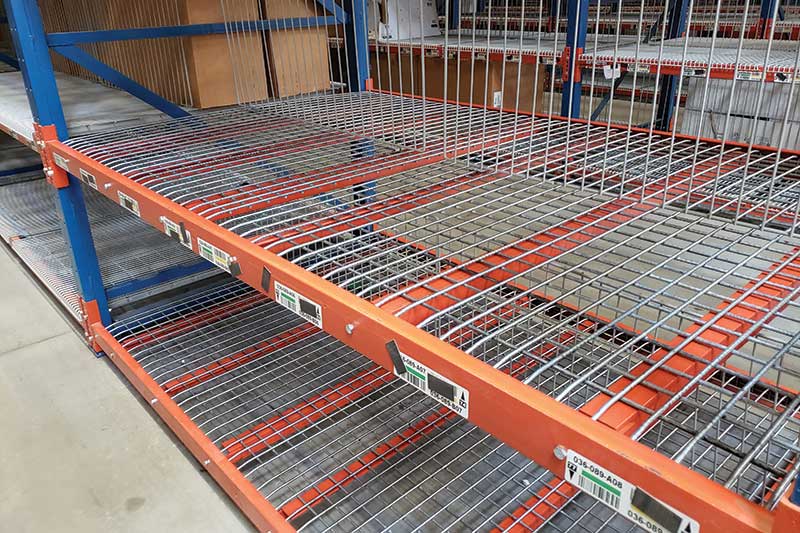
For example, Wachsmuth points out that traditional pallet flow rack stops at six positions deep. But convert that flow rack to pushback, and nine positions deep is very possible, increasing density by 50%. So, what used to be an aisle can now be filled with pallet storage positions. Makes you stop and think for a minute about what’s possible in your facility, for sure.
Multi-level pick modules are also adding new capacity and capabilities. While widely used for some time, these pick modules are increasingly popular, often displacing selective or very narrow aisle rack as companies look for ways to improve operations without increasing square footage.
Domingues has yet another twist on increasing storage density. Her take is a semi-automated pallet mole system. A shuttle runs underneath the pallet loads on a set of rails to specified storage positions. Deep lane rack systems here can go up to 50 pallets deep, she says.
Nestle installed the pallet mole to maximize storage density for pallets of bottled water. Domingues says it increased productivity and throughput nearly 30%.
In fact, semi-automated and automated storage systems rely just as extensively on rack as systems serviced by lift trucks. And as everyone knows, automated materials handling is hot right now.
It’s so hot that AR Racking, headquartered in Spain, has recently established a U.S. office to extend its business, says Pablo Montes, managing director. Beyond the company’s line of standard rack, Montes says AR has strategic partnerships with intralogistics companies to integrate its rack with automation, especially robots.
Rack certification
Finally, there’s the matter of seismic and building codes. And just like the products moving through rack these days, those codes are changing, too.
Weber explains that new building codes will be adopted in 2024. That, he says, will have a ripple effect on rack. For many years now, RMI has had what it calls the R-Mark. This certification sets the standard for industrial steel storage racks in accordance with building codes. In addition, the R-Mark includes seismic design provisions and is considered the default standard for the building codes.
As the codes change, says Weber, the R-Mark for manufacturing, system design and installations will be replaced with a new certification. While the details are yet to be determined, Weber says now is the time for those considering new rack capacity in their facilities to check with their suppliers and the RMI.
As Olson said earlier, every rack installation is an engineered system that has both operational and safety implications in every facility. If you don’t have design expertise on staff, hire it from suppliers, system integrators, distributors or consultants, Olson says.
And at the same time that you’re focused on your needs today, build some flexibility into the system for the next five to 10 years.

Article Topics
Creform News & Resources
Tuggers, carts & casters work in harmony to fill the labor gap Creform’s parent company celebrates 70th anniversary Getting warehouse rack systems right The state of robotics Carts, tuggers and casters: The unsung heroes of the warehouse New Creform supply storage cart Automatic guided vehicles adapt and evolve More CreformLatest in Materials Handling
Registration open for Pack Expo International 2024 Walmart chooses Swisslog AS/RS and software for third milk processing facility NetLogistik partners with Vuzix subsidiary Moviynt to offer mobility solutions for warehouses Materials Handling Robotics: The new world of heterogeneous robotic integration BSLBATT is looking for new distributors and resellers worldwide Lucas Watson appointed CSO for Körber’s Parcel Logistics business in North America Hyster recognizes Dealers of Distinction for 2023 More Materials HandlingAbout the Author
Subscribe to Materials Handling Magazine

Find out what the world's most innovative companies are doing to improve productivity in their plants and distribution centers.
Start your FREE subscription today.
April 2024 Modern Materials Handling

Latest Resources


